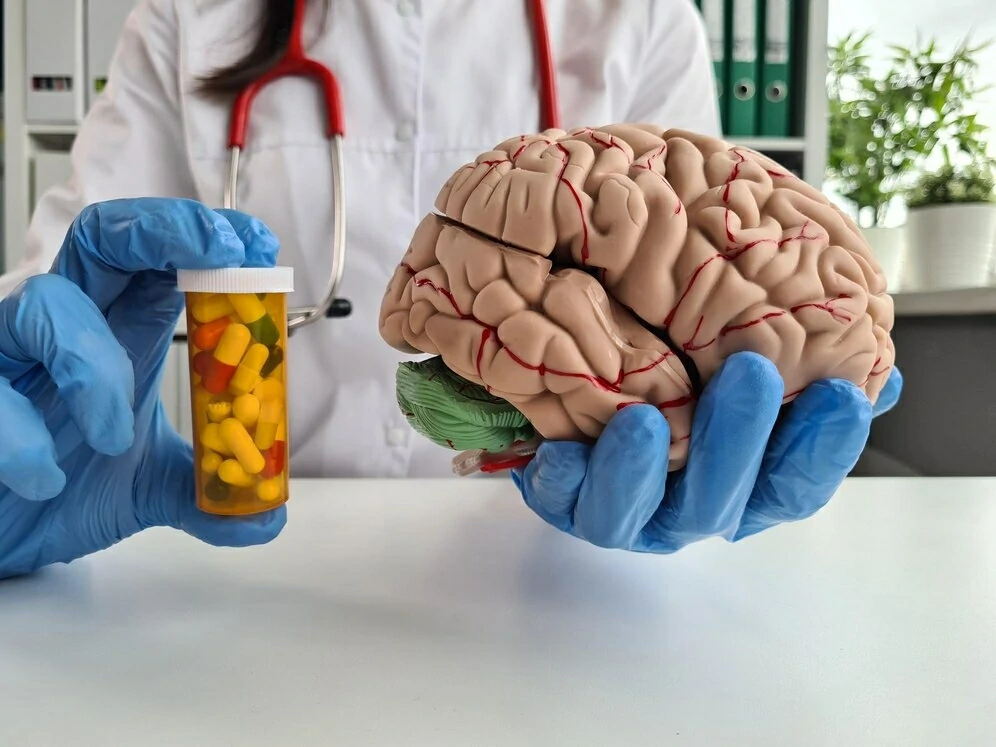Addiction: a captivating and relentless condition that grips millions across the globe. It’s not a mere flaw of character or a wavering resolve, but a profound alteration of the very essence of our brains. This formidable disorder wreak havoc on our bodies, minds, and relationships, demanding nothing short of expert intervention for triumph.
How Addiction Works in the Brain
Here are 7 crucial aspects:
1. The Brain’s “Reward System”: Get ready for a mind-blowing revelation! Addiction has a sneaky way of messing with our brain’s reward system. Whether it’s mind-altering substances or thrilling behaviors like gambling, they all have one thing in common – they
stimulate the release of dopamine, the ultimate pleasure-inducing neurotransmitter. And guess what? This dopamine-fueled pleasure party reinforces the behavior, leaving us craving for more! It’s like a never-ending loop of mind-boggling sensations.
2. Changes in Brain Structure: Prolonged exposure to addictive substances or behaviors can lead to changes in the brain’s structure. These changes often occur in areas responsible for judgment, decision-making, learning, and memory, leading to impaired functioning in these domains.
3. Dependence and Withdrawal: Over time, the brain becomes reliant on the addictive substance to feel pleasure, leading to dependence. If the substance or behavior is removed, withdrawal symptoms occur as the brain attempts to restore balance, often causing physical and emotional discomfort.
4. Emotional Response: Addiction often alters emotional response, leading to increased anxiety, depression, or other mood disorders. The emotional changes can further reinforce the addiction, creating a vicious cycle that may be challenging to break.
5. Genetic Factors: Genetics play a vital role in addiction, with some individuals having a higher predisposition to addiction due to their genetic makeup. Understanding genetic risk factors can be essential in prevention and treatment efforts.
6. Impact on Executive Function: The frontal cortex of the brain, responsible for executive functions like self-control and decision-making, is notably affected by addiction. This results in a decrease in an individual’s ability to resist cravings, making addiction more difficult to overcome.
7. Treatment Challenges and Neuroplasticity: Treatment for addiction can be complex due to the multifaceted changes in the brain. However, the brain’s ability to adapt, known as neuroplasticity, allows for recovery with proper treatment and support. Evidence-based approaches, such as therapy and medication, can support the brain in rewiring itself, helping individuals regain control over their lives.
These seven points provide a concise yet thorough understanding of how addiction works in the brain. They touch on key aspects such as the biochemical process, structural changes, emotional factors, and treatment considerations.
The Brain in Recovery: What to Expect
Here are the 4 crucial stages of brain recovery, highlighting what one can expect:
1. Withdrawal and Detoxification (0-7 days):
○ Physical and Emotional Symptoms: The initial stage involves withdrawing from the addictive substance, leading to physical and emotional symptoms like anxiety, nausea, insomnia, and irritability.
○ Medical Supervision: This stage often requires medical supervision, as withdrawal can be life-threatening in some instances.
○ Beginning of Healing: Detoxification begins the process of the brain rewiring itself and may last from a few days to a week, depending on the substance and individual factors.
2. Early Recovery (Weeks to Months):
○ Continued Cravings: Though the physical symptoms of withdrawal may diminish, cravings and psychological dependence often continue.
○ Cognitive Improvements: As the brain starts to heal, cognitive functions like memory, attention, and decision-making may slowly improve.
○ Emotional Regulation: Therapy and support are essential during this stage to help the individual learn new coping strategies and emotional regulation skills.
3. Sustained Recovery (Months to Years):
○ Rebuilding Neural Pathways: The brain continues to rewire and rebuild neural pathways, leading to more stable mood, improved judgment, and increased impulse control.
○ Lifestyle Changes: Continued commitment to therapy, support groups, and healthy lifestyle changes is critical during this stage for sustained recovery.
○ Potential for Relapse: Vigilance is needed, as the risk of relapse remains, though it decreases over time.
4. Advanced Recovery and Maintenance (Years):
○ Continued Growth: In this lifelong stage, the individual continues to grow and adapt, incorporating the skills and strategies learned in recovery into daily life.
○ Social and Occupational Integration: Integration into social and occupational environments reflects a return to a healthy and balanced life.
○ Ongoing Support: Continued support from friends, family, and support groups is vital to maintain the progress achieved.
These stages highlight the dynamic nature of recovery, underscoring the importance of patience, persistence, and professional guidance. It is not a linear process, and individuals may experience setbacks. However, with the right support and commitment, the brain’s remarkable ability to heal and adapt can guide a person towards a healthy, addiction-free life.
Conclusion
The journey from dependence to liberation is marked by fascinating changes within the mind, showing our innate ability to heal and adapt. Understanding these transformations isn’t just a scientific curiosity; it’s a roadmap to reclaiming control over one’s life. Embrace the truth about
addiction recovery: It’s a challenging but attainable path, illuminated by hope, strengthened by support, and powered by the brain’s incredible capacity for renewal. In recovery’s transformative embrace, a new chapter awaits, filled with possibilities, growth, and a renewed sense of purpose.


